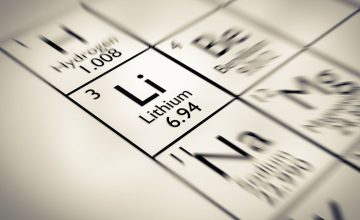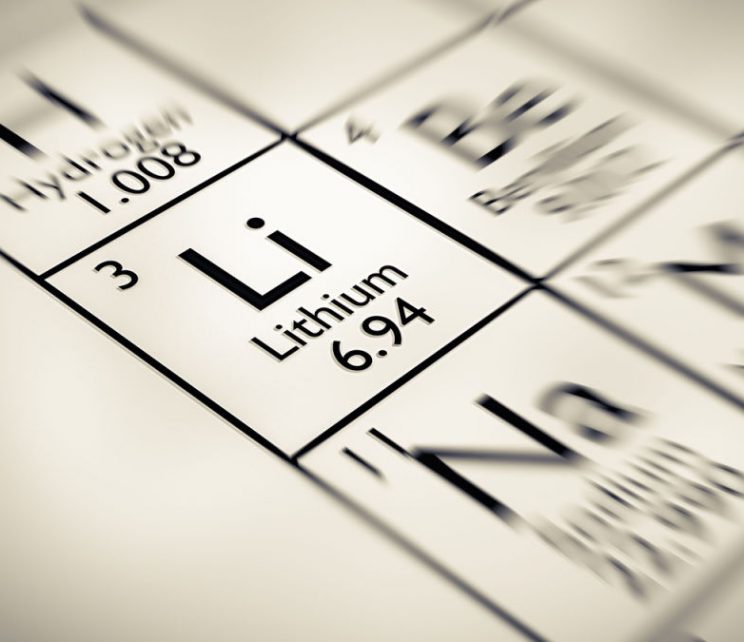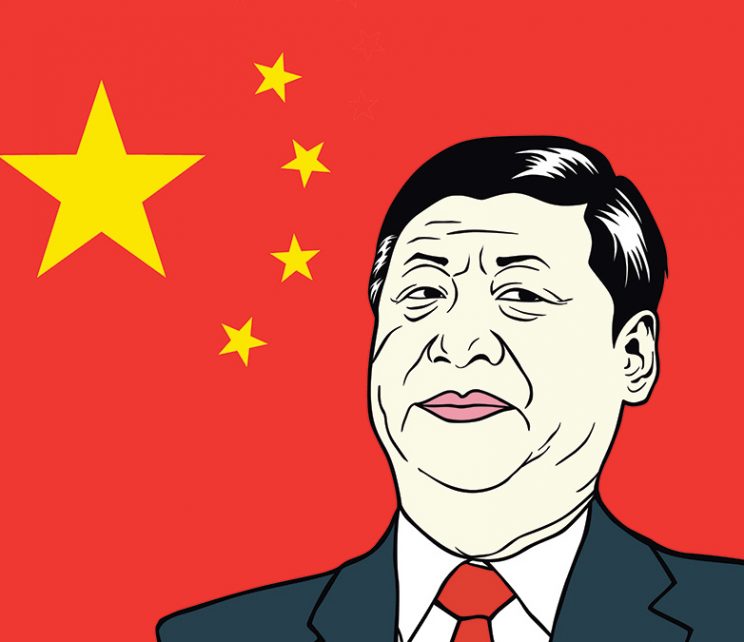
Mainstream Online Web Portal
LoginInvestors can view their accounts online via a secure web portal. After registering, you can access your account balances, periodical statements, tax statements, transaction histories and distribution statements / details.
Advisers will also have access to view their clients’ accounts online via the secure web portal.
The Point
Quick, actionable insights for investors
Australian Equities

Aussie equities outlook: two questions hold the key
THE fate of markets over the rest of 2023 largely depends on two questions: the outlook for rates and inflation, and the resilience of the Chinese economy.
That’s the view of Pendal PM Brenton Saunders, who manages Pendal MidCap Fund.
On inflation, markedly different outlooks in Australia and the US are leaving investors unsure where to turn, Brenton notes.
Australia is at least three-to-six months behind the US inflation cycle, he believes.
“In the US it feels like inflation has peaked and is making its way down – albeit more slowly than many had expected.
“But in Australia, we’re still seeing some fairly aggressive inflation in certain parts of the economy – mostly labour-related.”
Compounding that is a softer approach from the RBA compared to other OECD economies.
“We can realistically expect to see rates go higher and inflation remain an issue in Australia for a while.”

ASX midcaps: Unearthing the potential of mineral sands
Quick view
ASX midcaps: Unearthing the potential of mineral sands
Whether rubbing sunscreen on your face, reloading your printer ink or painting a wall at home, you’re probably consuming mineral sands.
Mineral sands are old beach, river or dune sands that contain concentrations of rutile, ilmenite, zircon and monazite.
They have a variety of uses from paint and paper through to toothpaste, sun cream and ceramics – and the biggest mineral sands producer in Australia is ASX-listed Iluka Resources.
Iluka is a holding in Pendal Midcaps Fund, which focuses on the 100 biggest companies outside the ASX50 – a good hunting ground for fast-growing sectors such mineral sands and rare earths.
“Mineral sands is a steady business that Iluka has grown up doing, says Pendal equities analyst Jack Gabb.
Iluka is now building a rare earths refinery in Western Australia which would process minerals such as neodymium and dysprosium for use in electric vehicles and clean-energy generation.

Mid-caps: Re-energised lithium price could power up ASX producers
Quick view
Mid-caps: Re-energised lithium price could power up ASX producers
Lithium prices made a sharp comeback in May after steep falls this year.
That could be good news for battery metal stocks, which are commonly found among ASX midcaps.
The price rebound – about 80% in May – should persist in coming months as an oversupply in key Chinese markets dissipates, believes Pendal’s Brenton Saunders.
“The falling lithium price was largely due to quite a significant de-stocking in China – principally in the battery part of the lithium value chain, which seems pretty close to clearing now,” says Brenton, who manages Pendal MidCaps Fund.
“That’s being driven by a step-up in demand for electric vehicles again, partly due to extended subsidies and incentive support from China’s government.”
The result is a more balanced supply chain of batteries and battery precursor materials, which has allowed prices for lithium to start to rise again.
“We expected this to happen, but it’s possibly coming through a little bit earlier than expected.”

Midcap case study: Lithium producer Allkem is well positioned for a rebound in lithium prices
Quick view
Midcap case study: Lithium producer Allkem is well positioned for a rebound in lithium prices
Among Australian mid-cap stocks, few companies get more media attention than lithium producers.
And as last week’s announced merger of ASX-listed Allkem and New York-listed Livent shows, they’re getting plenty of corporate attention as well.
What does the mooted $16 billion merger tell us about the lithium market, particularly in the wake of a price fall since late last year?
“Our view is that there is a rebound coming in lithium prices,” argues Pendal investment analyst Jack Gabb, citing higher demand for electric cars and an end to destocking in China.
Pendal holds Allkem shares in Pendal Midcap Fund and Pendal Horizon Fund.
One of Allkem’s advantages is its diversification of products, says Jack.
“It’s majority lithium carbonate but also has exposure to spodumene and lithium hydroxide. That’s all three lithium products while other producers are picking one or two.”

Brenton Saunders: ASX mid-caps offer exposure to fast-growing sectors such as battery metals
Quick view
Brenton Saunders: ASX mid-caps offer exposure to fast-growing sectors such as battery metals
Australia finally has a national strategy to “encourage greater use of cleaner, cheaper-to-run electric vehicles”.
The new ALP policy, alongside similar plans around the world, should help boost demand for “battery metals” such as lithium, produced by a range of ASX-listed miners.
What’s the best way to get exposure to quality stocks in this sector?
Pendal PM Brenton Saunders argues in favour of Aussie mid-cap portfolios.
Mid-cap portfolios are typically less concentrated and offer access to fast-growing industries such as cloud computing, medical innovation and battery metals.
Medium-sized companies tend to offer higher earnings growth than large-cap companies, often with less risk than small caps, says Brenton.
Brenton manages Pendal MidCap Fund, which invests in the 100 biggest companies outside the ASX50, with market caps ranging from around $1 billion to $10 billion.
“It’s really the sweet spot of corporate Australia. It’s a very useful addition to any balanced portfolio.”
Brenton and Australian lithium industry pioneer Ken Brinsden explained the opportunities in a recent webinar.

Aussie equities: What we can expect from earnings in the second half
Quick view
Aussie equities: What we can expect from earnings in the second half
Australia’s economic cycle has gone on longer than expected – and it showed in the recently ended ASX earnings season.
Somewhat surprisingly, most parts of the economy are still in reasonably good shape despite a string of interest rate rises.
The strong jobs market is a factor, helping prop up consumer spending.
“But the expectation is that higher interest rates will likely hurt earnings in the rest of the financial year,” says Brenton Saunders, who manages Pendal MidCap Fund.
“Across the market as a whole, revenue beats were pretty widespread even though many companies missed earnings forecasts at the bottom line. Revenue beats were much higher than profit beats.
“We saw profit margins reduce and that relates to higher costs. In many cases, despite high product price increases, costs increased at a faster rate, resulting in margin pressure.”

Brenton Saunders: what to watch in ASX earnings season
Company outlook statements will heavily influence share performance in the ASX half-year earnings season, says Pendal’s Brenton Saunders.
Australian listed companies will report results for the December half over the next few weeks.
Reporting season comes against a backdrop of uncertain global macro-economic data which has the markets on edge as investors try to assess the outlook for inflation and interest rates.
“Most of the focus is going to be on the outlook statements rather than the results companies produce on the day, says Brenton, who manages Pendal MidCaps Fund.
Companies with strong retrospective earnings results and weak outlook statements could be sold off by a market “trying understand what 2023-24 will look like”, says Brenton.
“In general, we expect a complicated reporting season and no real trends.”

How long will the ASX keep going? Here are the factors to watch
Quick view
How long will the ASX keep going? Here are the factors to watch
It’s been a strong start to the year for the ASX. What will determine how long it keeps going?
Three things are driving a rapid turnaround from last year, says Brenton Saunders, who leads Pendal MidCap Fund:
- The faster-than-expected re-opening of China
- Signs that inflation is reaching a peak
- Increasing evidence that a hard-landing global recession can be avoided
But there are still clouds over the global economy including the prospect of a downturn later this year and the uncertainty of the Russia-Ukraine conflict.
“This year is probably going to be quite choppy, because we have improving longer-term expectations but still with the prospect of some potentially severe short-term implications.
“We still think there’s a fairly high level of binary risk out there that is yet to be quantified.
“Earnings is still the area that we’re most worried about — ratings are starting to improve but there’s still material risk around earnings.”

Brenton Saunders: What you should really be watching as markets rally
Quick view
Brenton Saunders: What you should really be watching as markets rally
The market’s up since the start of October. How should investors interpret this?
Rallies are a sign the market is looking for a slowdown in rate rises. But investors are better off relying on hard economic data than trying to pick a pivot point, says Pendal’s Brenton Saunders.
With labour markets still strong and inflation rising, it is likely too early to suggest central banks are changing their approach, says Brenton, who manages Pendal MidCap Fund.
“Many of the drivers of inflation continue to run hot — and more importantly headline and core inflation remain stronger than expected.
“The Fed has been incredibly clear in terms of their objectives of getting inflation under control.
“We have no reason to doubt them. It just feels like the market is trying to trough a little early.”
Keep an eye on jobs data and earnings downgrades, especially retail, housing and even resources, says Brenton.

What does Xi Jinping’s consolidation of power mean for investors?
Quick view
What does Xi Jinping’s consolidation of power mean for investors?
Confirmation of Xi Jinping’s third term as China’s leader wasn’t surprising, but his apparent control is greater than most expected.
It appears Xi’s main aim is to turn the “successfully achieved moderately prosperous society” into a “modern socialist society”.
“This is seen as part of China’s ambitions to be an independent technology powerhouse and to project power and influence,” says Pendal’s Brenton Saunders.
“This may suggest the economy remains on a relatively austere pathway by historical standards.
“The potential for China’s property market remains muted. Material stimulus is unlikely beyond the short term.”
That’s a headwind for economic growth and demand for steel-making materials, Brenton says. “Iron ore and coking coal stocks are most exposed to the trend long term.
“But China’s strategic pivot to technology, grid investment and electric vehicles should benefit base metal and lithium-producing companies in the long term.”

Turning point for shares: what to watch
Quick view
Turning point for shares: what to watch
Waiting for a market inflection point?
We asked Aussie equities portfolio manager Brenton Saunders which signs he’s watching.
“One is the Chinese macro-economic outlook,” says Brenton, who manages Pendal MidCap Fund. “It’s unclear, despite some attempts at stimulus, that they are addressing the right areas to reverse that market in any kind of meaningful way.
“Energy policy has also changed gears. We’ve had rumoured sabotage of Russia’s gas pipelines to Europe. That almost assures Europe will have a tougher winter.
“The OPEC agreement to cut supply is the last thing the US Fed wanted and will come as a headwind to getting inflation under control.”
On rates, we may see more rises than the market’s expecting, “and likely higher for longer”.
“We still think we need an earnings downgrade cycle to put a bottom in this market – especially in discretionary retail and possibly commodity cyclicals.”

ASX earnings season: the big talking points
Quick view
ASX earnings season: the big talking points
ASX-listed companies posted better-than-expected full-year earnings, though the averages hid a wide variation in individual results, says Pendal’s Brenton Saunders.
Revenue and dividend “beats” outpaced the misses by around 1.3x. But forward earnings guidance was negative on average.
Inflation, interest rates, labour availability and trade working capital increases were the big talking points in a reporting season that was complicated by a shifting global macroeconomic environment.
“Look for stocks that are either beneficiaries of the move higher in interest rates or those whose business are not overly geared to higher rates and have been heavily sold off year to date,” says Brenton, who manages Pendal MidCap Fund.
The mid-June rally benefitted oversold discretionary retail and long-duration, profitable tech companies, he says.
“It’s very much an alpha kind of environment, where staying across stock specifics is not only useful — it’s an absolute necessity.”
Loading posts...
Loading posts...














